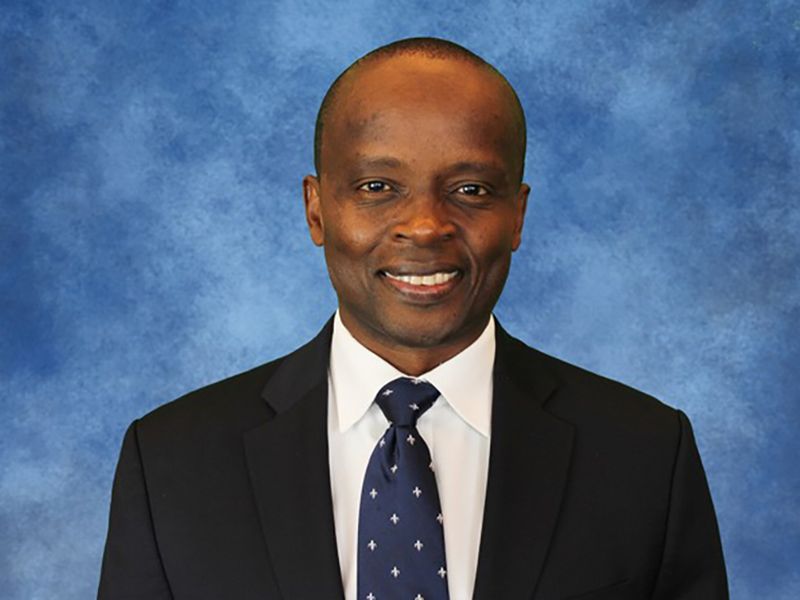
Peter Muriungi, the new CEO of Chase Auto, is no stranger to steering a major lender through a crisis.
Muriungi, 48, cut his teeth in asset-backed lending at Bear Stearns, where he worked from 1999 through the financial crisis in 2009. Muriungi moved to Ally Financial, and from 2009 to 2013, primarily focused on finding creative solutions in the face of monumental economic disruption.
Just weeks before the coronavirus pandemic subsumed economic activity in the U.S., Muriungi took the reins of Chase’s more than $80 billion auto business from Mark O’Donovan, 49, who was head of Chase Auto from November 2016 through Feb. 24 of this year. O’Donovan left to lead Chase’s home lending division, where Muriungi spent the bulk of his tenure at the bank.
Muriungi most recently was head of transformation for home lending at Chase, and he has held various leadership roles within the company since 2013. As head of mortgage servicing, Muriungi managed a portfolio of 7.3 million mortgages representing a combined balance of $1 trillion. He spoke with Staff Reporter Jackie Charniga last week on starting his new role amid the pandemic, digital adoption in auto retail and the lender’s captivelike relationships. Here are the edited excerpts.
Q: Can you describe your first months on the job?
A: The first few months, the first job was to stabilize, to think through for our clients as well as our people. Getting folks comfortable with this idea of migrating and providing services at home. The thing that I found fascinating was the supply chain disruption and what it took to find really creative solutions around how are we going to think about lease returns, how are we going to think about the logistics associated with auctions and so on.
How have your experiences in home lending helped you manage this crisis?
Coming into auto, [my] experience was very handy in terms of ensuring a level of clarity on the things that matter the most in the short term, which is always taking care of your consumers, their clients and people first. In terms of background, my career started in home lending. I spanned all aspects of the mortgage business early on in my career. I worked for a subsidiary of Bear Stearns, EMC Mortgage. I had the opportunity to participate in aspects of capital markets and operations in 2008, 2009 when we had the crisis. I spent a lot of time in different roles at Ally Financial, primarily managing the crisis, working with regulators and state attorneys general and a variety of institutions trying to figure out what restitution is going to look like.
What are your thoughts on the shift to digital retailing spurred by the coronavirus pandemic?
The dramatic acceleration of digital adoption has been fascinating to observe. You’ve seen the Carvanas and Vrooms increase volume. We’ve seen more traditional brick-and-mortar dealers adopt omnichannel very quickly. I find that to be very aligned with our broader strategy, which is to provide a phenomenal, easy car financing experience that is good for consumers, is good for dealers and is good for the finance company. The home lending product is complicated by regulations. A lot of what the industry was solving there is, how do you simplify the process of acquiring an asset in the context of extraordinary regulatory complexity? In auto, the product itself is not as complex. The challenge has been, how do you find a framework where digitization is aligned with everybody’s interests? I’m encouraged that digitization can be designed in a way that works for everyone.
How do you feel about Chase’s consumer auto lending performance during COVID-19?
Around 7 to 8 percent of our total portfolio accepted forbearance, about 300,000 auto customers. Ninety percent of them have since matured, meaning they’ve come to the end of their forbearance period performance, which has been very good. Unemployment remains at elevated levels. We are preparing as an organization for a variety of outcomes in terms of what that could mean in the long term. We have adequate reserves that are prepared accordingly. However, in the short term, we just have not seen that manifest itself in terms of defaults, both from customers that have asked for relief and general defaults. Government intervention has been very beneficial in terms of credit. The mix has shifted significantly to loans. The net effect has not been a reduction in production. Obviously, as manufacturer incentives have gone up, what we’ve seen is consumers making the choice that the loan payment makes as much sense as a lease payment.
Chase has renewed its captivelike relationship with Subaru. What are the benefits of partnering with a bank like Chase?
Our captive business is important, but so is our dealer services business. We have a powerful franchise that banks 60 million households. We have distribution in branches, we have distribution in a phenomenal digital asset [through the Chase app and website]. And we think we can use that distribution to further strengthen our partnerships with manufacturers just as much as we can use that distribution to strengthen our partnerships with dealers and to provide phenomenal car financing for consumers. We can bring value in terms of discounts and other things that you may not find everywhere, and that we can deliver that entire experience in an integrated digital platform.